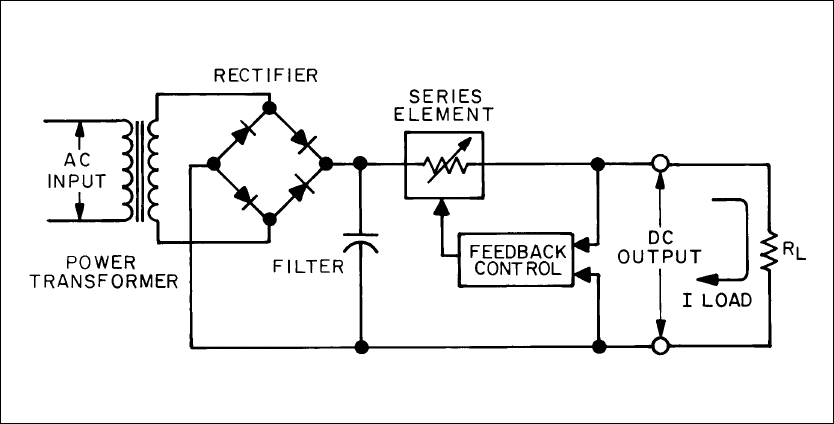
18
A simple unregulated power supply consisting of only a rectifier and filter is not capable of providing a ripple
free dc output voltage whose value remains reasonably constant. To obtain even a coarse approximation of the
ideal output characteristic of Figure 1, some type of control element (regulator) must be included in the supply.
Regulating Techniques
Most of today's constant voltage power supplies employ one of these four regulating techniques:
a. Series (Linear)
b. Preregulator/Series Regulator
c. Switching
d. SCR
Series Regulation
Series regulated power supplies were introduced many years ago and are still used extensively today. They have
survived the transition from vacuum tubes to transistors, and modern supplies often utilize IC's, the latest in
power semiconductors, and some sophisticated control and protection circuitry.
The basic design technique, which has not changed over the years, consists of placing a control element in
series with the rectifier and load device. Figure 2 shows a simplified schematic of a series regulated supply with
the series element depicted as a variable resistor. Feedback control circuits continuously monitor the output and
adjust the series "resistance" to maintain a constant output voltage. Because the variable resistance of Figure 2
is actually one or more power transistors operating in the linear (class A) mode, supplies with this type of
regulator are often called linear power supplies.
Figure 2. Basic Series Regulated Supply
Notice that the variable resistance element can also be connected in parallel with the load to form a shunt
regulator. However, this type of regulator is seldom used because it must withstand full output voltage under
normal operating conditions, making it less efficient for most applications.
